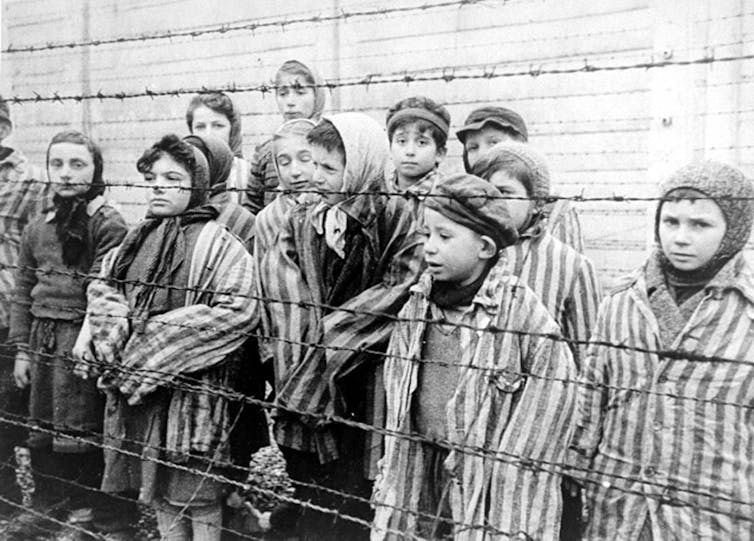
(Creative Commons)
Wilson T. Bell, Thompson Rivers University
Children and family have been central to the institution of the concentration camp from its beginnings 120 years ago. Wikipedia has now added the notorious American border detention centres to its list of concentration camps, and the #FamiliesBelongTogether Twitter hashtag has brought up frequent comparisons.
The merits of the comparison between detention centres and concentration camps have been debated elsewhere, but can we learn anything from this dreadful history of children behind barbed wire, even as the Trump administration finally moved to end the practice?
The British constructed camps during the 1899-1902 South African War in order to divide families. They hoped that Boer men who were fighting British forces would give up once they discovered that their wives and children were held in camps.
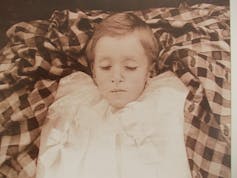
(Creative Commons)
Similar to the Trump administration’s apparent hope that the breakup of families would deter unwanted migration, the British sought to deter Boer fighters. British parliamentarians critical of the policy labelled these “concentration camps,” alluding to the Spanish policy of the “reconcentration” of civilians during the Spanish-American War (1898).
Conditions in the British-run camps were horrific, particularly for children, with mortality rates upwards of 25 per cent. An epidemic of measles accounted for roughly 40 per cent of childhood deaths in these camps, and other diseases such as typhus and dysentery were also devastating.
Families broken up in former Soviet Union
The Soviet Union’s system of camps that reached their peak during Joseph Stalin’s rule from the 1930s to the 1950s also reveals the destruction of families. While mass arrests broke up the family, and children of “enemies of the people” were separated from their parents, there were also many children in the Gulag itself.
Prison camps developed an infrastructure that, on the surface, supported pregnancy and childbirth. There were maternity wards in some camp clinics, as well as nurseries, and pregnant women and nursing mothers officially received increased rations.
In practice, the system was regularly a nightmare. Children born in the camps were separated from their mothers, who only managed to see them at set times for nursing.
Hava Volovich, whose own daughter died in the camps, remembers that hundreds of camp children died each year, meaning that there were “plenty of empty beds in the infants’ shelter even though the birth rate in the camps was relatively high.”
At the age of two, many of the surviving children were sent either to orphanages or to relatives — a forced redistribution of children away from their parents, who, as Gulag prisoners, were at best stigmatized, and at worst seen as a major threat to Soviet society.
The Gulag also held camps for young offenders, where teenagers worked as forced labourers and faced horrific living conditions.
Nazis crushed families
Nazi policy included both large-scale deportations and large-scale importations of population groups, with major implications for families.
The Nazis removed citizenship from German Jews then, during the Second World War, sent most Jews, from Germany and elsewhere, to camps outside the borders of pre-war Germany. Yet, as the war progressed, Germany brought in huge numbers of forced labourers from all over Europe (U.S. Attorney General Jeff Sessions’ claim that German-run camps were designed to keep Jews in, rather than out, is unfounded).
Nazi family policy was a pivotal part of the concentration camp. Once the death camps were operational, the Nazis crushed the family unit among undesirable populations, focusing on Jews.
The selection process at Auschwitz could result in the temporary survival of one or both parents if they were physically fit (or just lucky), but children were usually sent directly to their deaths.

(AP Photo/Bebeto Matthews)
Jewish writer Elie Wiesel lost his mother and sister right away, and only survived selection because he lied about his age, claiming he was 18 and not 15, his actual age.
The unimaginable cruelty of many practices —the smashing of babies’ heads against walls, the medical experimentation, particularly on twins —reveals an extreme dehumanization.
Even at the show camp of Terezin, which included a family camp, only 150 of the roughly 15,000 children sent there survived.
High mortality rates
What do these historical cases have in common? All involved the separation, either immediate or eventual, of children from one or both parents, and all involved horrific conditions and extremely high mortality rates for the children.
In all cases, the dehumanization of the unwanted population was a key starting point. As historian Aidan Forth writes of the South African case, Gen. Herbert Kitchener referred to the Boers as “savages with only a thin white veneer,” and British officials often described the Afrikaners as “dirty, careless, [and lazy.]”
Former Gulag prisoners frequently reported that guards and officials referred to them as animals or as “scum.” As one former prisoner wrote, quoting a camp boss: “A person? … There aren’t any here! Here are enemies of the people, traitors of the motherland, bandits, crooks. The dregs of humanity, scum, riff raff, that’s who is here!”
The dehumanization of the Nazi camps is well known, as Nazi propaganda frequently likened the Jews to vermin or to an infectious disease, making Trump’s tweet about asylum seekers particularly chilling:
Another commonality can be found in the experiences of the victims.
Read more:
Why long-term separation from parents harms kids
In all cases, children separated from parents could not have known if they would ever see their parents again, or under what circumstances. The children of the camps had to rely, for the most part, on other children, for any support or security. Often, the separation was permanent.
These comparisons only take us so far, however. Some commentators have looked not at European powers, but to a long North American history — including slavery and residential schools — of separating non-white children from their parents.
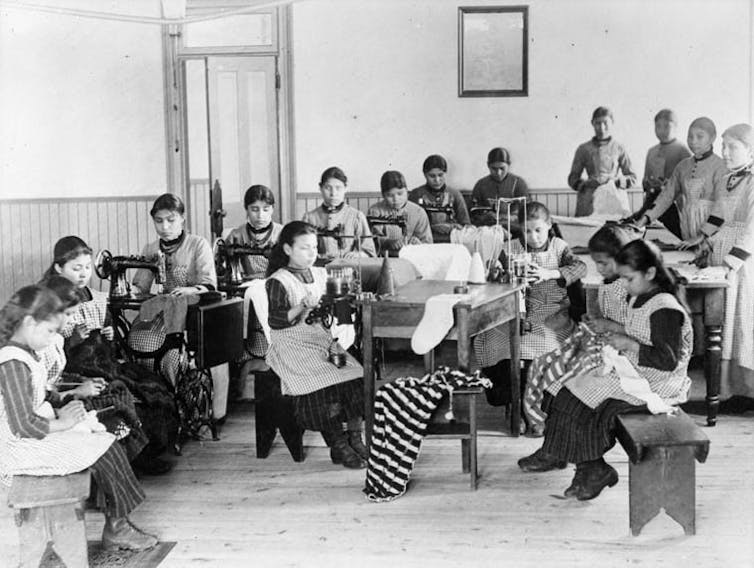
(National Archives of Canada)
If there is any optimism to be found in the historical examples of children in concentration camps, perhaps the history of public reactions can provide some hope.
In South Africa, reports by Emily Hobhouse and then the Fawcett Commission, particularly on starving children, galvanized public pressure to force the British government to improve conditions at the camps.
Outcry helped end the practice
In contrast, in Nazi Germany and Stalinist Russia, there could be neither public nor parliamentary discussion of inhumane internment conditions.
Bu today, some U.S. reporters and lawmakers have visited the American detention centres, and non-governmental organizations such as Amnesty International and even the Methodist Church, as well as many elected officials, maligned the policy.
The public discussion, and the public outcry against the separation of children from their parents that eventually caused U.S. President Donald Trump to cave and end the policy, perhaps makes the American case more similar to that of South Africa than either the Nazi or Soviet camps.
This similarity, however, depends on the actions now of the Trump administration, which for several weeks before its reversal included denial, deflecting blame and even justification.
![]() But with reports of children being torn away from their mothers’ arms while breastfeeding, the more notorious concentration camps of the 20th century must serve as a stark reminder that the act of dehumanization is a slippery slope towards violence and further atrocities.
But with reports of children being torn away from their mothers’ arms while breastfeeding, the more notorious concentration camps of the 20th century must serve as a stark reminder that the act of dehumanization is a slippery slope towards violence and further atrocities.
Wilson T. Bell, Assistant Professor of History and Politics, Thompson Rivers University
This article was originally published on The Conversation. Read the original article.

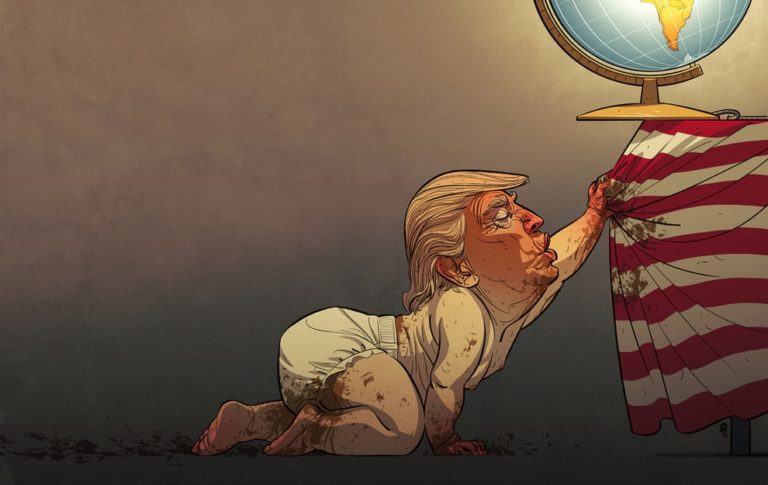
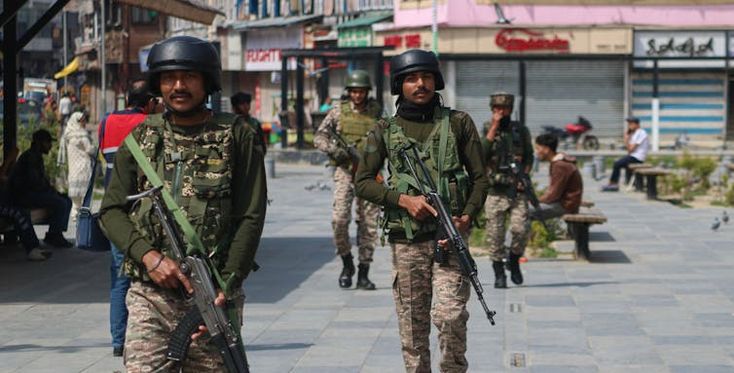
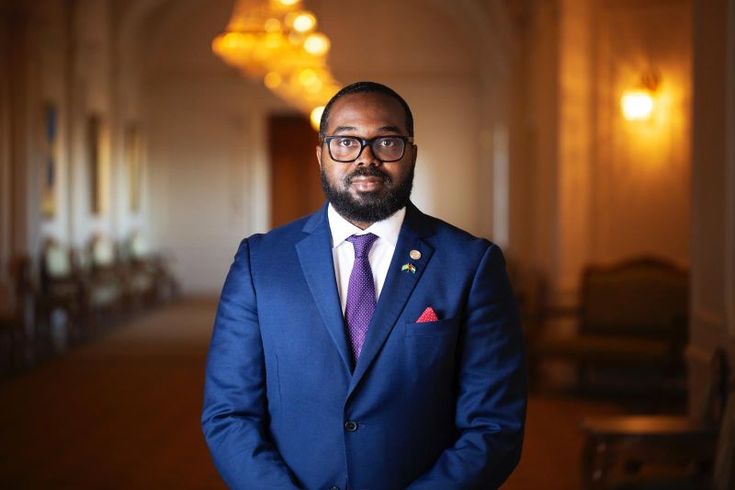
17 Comments
Pingback: สมัครเน็ต ais
Pingback: Trust Bet
Pingback: สล็อต เครดิตฟรี
Pingback: เว็บหวยสด Lsm99 ไม่มีเลขอั้น
Pingback: John Lobb
Pingback: จอ led ขนาดใหญ่
Pingback: herbal supplements
Pingback: pgg369
Pingback: marine88
Pingback: โคมไฟ
Pingback: บล็อกปูพื้น
Pingback: Eng1ineering
Pingback: ทำความรู้จัก King899 เว็บหวยที่ดีที่สุด
Pingback: เว็บไซต์แทงบอลออนไลน์
Pingback: โคมโรงงาน
Pingback: รีวิวเกมสล็อต
Pingback: บอลสเต็ป 4 เสียครึ่ง1คู่